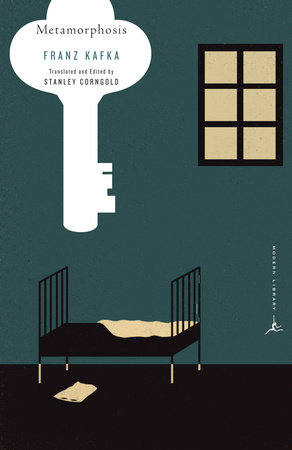Excerpt
The Red and the Black
Chapter one
A Small Town
Put thousands together
Less bad,
But the cage less gay.
—Hobbes
The little town of Verrières might be one of the prettiest in all Franche-Comté. Its white houses with their sharp-pointed roofs of red tile stretch down a hillside, every faint ripple in the long slope marked by thick clusters of chestnut trees. A few hundred feet below the ruins of the ancient fortress, built by the Spanish, runs the River Doubs.
To the north, Verrières is sheltered by a great mountain, part of the Jura range. The first frosts of October cover these jagged peaks with snow. A stream that rushes down from the mountains, crossing through Verrières and then pouring itself into the Doubs, powers a good many sawmills—an immensely simple industry that provides a modest living for most of the inhabitants, more peasant than bourgeois. But the sawmills are not what brought prosperity to the little town. It was the production of printed calico cloth, known as “Mulhouse,” which ever since the fall of Napoleon has created widespread comfort and led to the refinishing of virtually every house in Verrières. Just inside the town, there is a stunning roar from a machine of frightful appearance. Twenty ponderous hammers, falling over and over with a crash that makes the ground tremble, are lifted by a wheel that the stream keeps in motion. Every one of these hammers, each and every day, turns out I don’t know how many thousands of nails. And it’s pretty, smooth-cheeked young girls who offer pieces of iron to these enormous hammers, which quickly transform them into nails. This operation, visibly harsh and violent, is one of the things that most astonishes a first-time traveler, poking his way into the mountains separating France and Switzerland. And if the traveler, entering Verrières, asks who owns this noble nail-making factory, deafening everyone who walks along the main street, he’ll be told, in the drawling accent of the region, “Ah—it belongs to His Honor the Mayor.”
If the traveler spends just a moment or two on Verrières’s grand thoroughfare, which ascends along the bank of the Doubs right up to the top of the hill, the odds are a hundred to one he’ll see a tall man with an air both businesslike and important.
As soon as he appears, every hat is respectfully raised. His hair is grizzled, he’s dressed in gray. He wears the insignia of several knightly orders; his forehead is lofty, his nose aquiline, and taking him all in all there’s a certain orderliness about him. At first sight, one even feels that he blends the dignity of mayoral status with the sort of charm still often to be found in a man of forty-five or fifty. But it does not take long for a Parisian traveler to be struck, most unfavorably, by clear signs of self-satisfaction and conceit, topped off by who knows what limitations, what lack of originality. Finally, one is aware that his talents are confined to making sure he is paid exactly what he is owed, while paying what he himself owes only at the last possible moment.
This then is Monsieur de Rênal, mayor of Verrières. Crossing the street with solemn steps, he goes into City Hall and disappears from the traveler’s sight. But if the traveler keeps on walking, no more than another hundred paces up the hill he will see a distinguished-looking house and, if he looks through an adjoining wrought-iron gate, a very fine garden. Beyond that, he will see a horizon shaped by Burgundian hills, which seems to have been put there expressly for the purpose of pleasing the eye. This view will help the traveler forget the foul smell of petty financial transactions, which had begun to asphyxiate him.
He is informed that this house belongs to Monsieur de Rênal. The mayor of Verrières owes this fine, just-completed dwelling, built of cut stone, to the profits earned by his noble nail factory. His family, it is explained, is Spanish, ancient, and (as the story is told) settled in the region long before Louis XIV conquered it.
Ever since 1815, his status as an industrialist has embarrassed him. It was 1815 that made him mayor of Verrières. The terrace walls around the different parts of this magnificent garden, holding in place each of the different levels descending almost to the Doubs, are yet another reward for Monsieur de Rênal’s iron-trade business acumen.
Nowhere in France can you hope to find the picturesque gardens surrounding Germany’s manufacturing towns—Leipzig, Frankfurt, Nuremberg, etc. In Franche-Comté, the more walls you put up, the more your property bristles with rocks heaped one on top of another, the more claim you have on your neighbors’ respect. Monsieur de Rênal’s gardens, packed with walls, are even more admired because he bought—for just about their weight in gold—the bits and pieces of land on which they lie. For example, the sawmill located so strangely right on the bank of the Doubs, which caught your eye as you entered Verrières, and on which you noticed the name sorel, written in gigantic letters on a board protruding over the roof, until six years ago had stood exactly where, at this very moment, they are building the wall for the fourth terrace of Monsieur de Rênal’s garden.
For all his haughty pride, Monsieur de Rênal had been obliged to make a good many overtures to old Sorel, a tough, stubborn peasant; he had to count out a stack of handsome gold coins before the old man agreed to move his business elsewhere. As for the public stream that had powered the sawmill, Monsieur de Rênal relied on the influence he enjoyed in Paris to have it diverted. This official favor had come to him after the elections of 182-.
To get one acre, he had given Sorel four, situated five hundred paces farther down the bank of the Doubs. And even though the new location was far more advantageous for his trade in pine boards, Père Sorel (as they call him, now that he’s a rich man) knew how to play on his neighbor’s pressing impatience, and his land-owning mania, squeezing out a sale price of six thousand francs.
To be sure, the transaction was criticized by wiser heads in the area. Once, about four o’clock on a Sunday, coming home from church, dressed in his mayoral robes, Monsieur de Rênal saw in the distance old Sorel, surrounded by his three sons, watching him and smiling. That smile proved fatally illuminating to the mayor: he realized, from then on, that he could have bought the land for less.
To earn a public reputation in Verrières, the essential thing—while of course building a great many walls—is not to adopt some design carried across the Jura gorges by Italian stonemasons, in their springtime pilgrimages to Paris. Any such innovation would earn the imprudent builder the unshakable taint of rebel; he would be forever after ruined in the eyes of the wise, moderate folk who parcel out reputation in Franche-Comté.
In truth, these wise fellows wield an incredibly wearisome despotism, and it is precisely this wretched word that makes small towns unlivable for those who have been successful in that great republic we call Paris. The tyranny of opinion—and such opinion!—is every bit as idiotic in the small towns of France as it is in the United States of America.














